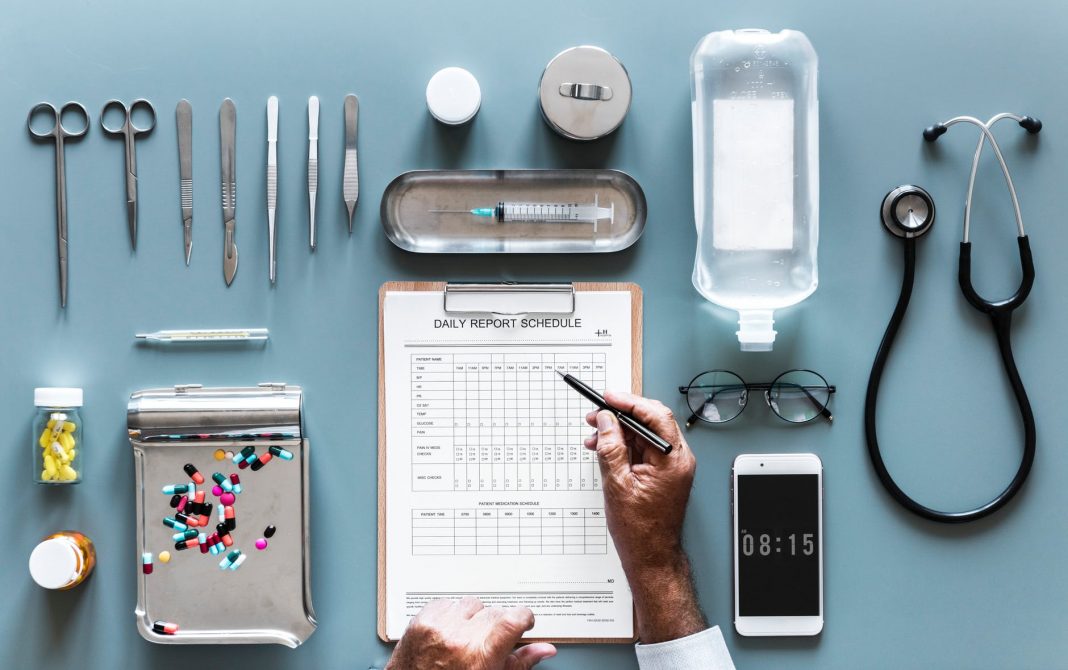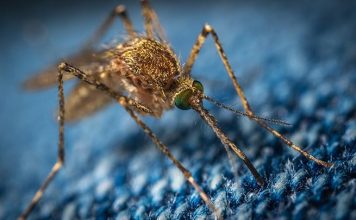 |
|
| Issue #100 • July/August, 2006 |
As little as a century ago, the average life span in the United States was 49 years. Today it is 77. Fifty years ago, the average life span in India or China was 40. Today it’s in the mid-60s. Increases in medical knowledge and surgical procedures play a role in this increased longevity, but not the major role.
Sanitation and nutrition
The increase comes mainly from surviving birth and childhood. The fact is, in societies with low life expectancies, the biggest reason they are low is because of deaths during childhood.
In fact, a person born in Greece 2,000 years ago had a fairly good chance of making it to old age if he or she could simply survive childhood.
What’s brought about this leap in longevity? The greatest advances have been in sanitation and nutrition. Improvements in medicine are a distant third. Granted, if you have a disease, you could die without treatment. But, in general, sanitation alone is the greatest contributor to today’s longer life spans. If you’re 80 years old, the most important thing to maintaining your health may be medical science. But if you’re a newborn, the most important things to making it to 80 are good sanitation and nutrition.
The need for sanitation is so great that the sewer should rank as one of the great inventions of civilization. The greatness of Rome probably rests more on its engineering feats; i.e., the building of aqueducts to bring clean water to its cities, and the building of sewers to take away wasteas well as its ability to build and maintain its ubiquitous roadsthan it did on its formidable army.
In Western civilization today, we take for granted the clean water coming from our taps and the sewer systems and trash trucks that carry away our waste. But, they have done more to improve our health than all the doctors, nurses, and hospitals combined. It may be difficult to comprehend that the garbage man, the sewer worker, the farmer, and the grocer are more important to your health than the highly paid doctor, but it’s true. The leap in life spans has not been a medical leap, but a leap in public sanitation and nutrition.
Sanitation includes the control of vermin. The Black Death that swept Europe, killing at least a quarter of its population and perhaps as many as a third, could not have been nearly so devastating if people of that time had simply controlled the rats. It was the fleas on the rats that transmitted the deadly disease.
Sanitation has also brought about the eradication of many diseases. Epidemics of yellow fever and malaria used to sweep portions of this country until the draining of swamps and invention of pesticides brought about the control of the mosquitoes that transmitted the diseases.
Still, medical science is important, and has added to our overall health and well-being. And while I could get a job fairly easily picking up garbage or working on a sewer line, I could not make it as a doctor without investing a lot of time and money in an extensive education.
Besides, writing about the history of medical science is much more interesting than the history of water pipes, sewage treatment, and trash removal. Medical history has occupied some of the best minds the human race has ever produced, and it is the stuff of gripping drama.
Early man practiced health care and medicine
It’s safe to say you don’t have anything if you don’t have your health, and it appears as if humans, since before the dawn of civilization, have been obsessed with their health and how to preserve it. And there’s actual evidence that this is true.
Although it’s silly to say conclusively what cave art or the figurines found at archaeological digs meant to the prehistoric people who made them, they suggest those ancient people believed in spirits and supernatural forces that affected the real world around them. And if we extrapolate from what we know of the beliefs of primitive people living today, and their uses of amulets, ceremonies, and spells, we can infer with virtual certainty that similar beliefs existed among our prehistoric ancestors. And just as with both modern and primitive people alive today, it is also easy to imagine that among the concerns of our long-ago forebears was their health, their well-being, their lives, and their deaths.
Health care and medicine may seem like modern inventions, but we know they were practiced in prehistoric times, even if what was practiced back then may seem strange to us today.
There is evidence of medical treatments among ancient peoples. Archaeologists have found everything from mended bones that had been broken and set, to evidence of care of the elderly who suffered some of the diseases that afflict us even today, such as debilitating arthritis.
Ancient Incas performed invasive brain surgery
There is even evidence of surgical practices found in the fossil record. Trepanned skulls have been discovered in many places in the world, but particularly among the ancient Incas of South America. And what was this trepanning of a skull? It was a procedure in which holes were drilled through the skull to reach the brain. Why they performed this surgery we don’t know. But, whatever their intentions, they performed it oftenand successfully. In an ancient world that could have known nothing about microbes and not nearly as much about human anatomy, we know now people survived this radical procedure because many of the skulls archaeologists have found show complete healing around the wounds. So these people lived for years after the surgery was performed.
Medicine suffers setback at hands of the Church
Also, many of the drugs we use today, such as digitalis, morphine, and aspirin come from plants we know ancient people used to treat illnesses and injuries. And there were other drugs as well. But an entire pharmacopoeia of drugs that naturally occur in plants and minerals was lost to Europeans when, in the Middle Ages, the Church deemed many of the women who practiced this kind of medicine to be witches. Some were executed, others simply ceased to practice. But much of the knowledge that had been passed on from mother to daughter for centuries ceased to exist and is only being rediscovered today.
Once the use of herbal and mineral cures was outlawed by the Church, European medical practices became more primitive than that of prehistoric man and the primitive tribes that live today in South America and Papua New Guinea. For in witch-hunting Europe, there was little done to care for the ill other than to make them comfortable and to pray over them.
This is not to say that what was lost with these women were some kinds of miracle drug or supercures. Many of the “treatments” they used probably had no effect at all. But some were doubtless things we’d like to take a look at today and may have value that modern medical science could exploit.
We don’t usually know what may have made the ancients try or settle on any particular treatments for a particular malady. They are likely to have depended on several things: Traditions, superstitions, trying something and because the patient recoveredwhether it was coincidence or not. But there was no scientific research per se, as the scientific method with its insistence on reproducibility of results and peer review had not yet been invented. So medicine was largely a hit-and-miss proposition.
But even hit-or-miss can get results. Many of the discoveries, drugs, and medical equipment we have today are based on serendipitous and chance discoveries. Among these are penicillin, the pace maker, and even x-rays.
What follows is an abbreviated history of health and medicine that may help you understand how medical science got to where it is today and where it may be heading in the future.
It’s been a long and winding road with many dead ends and reversals of direction. But it is a road humanity has taken because of our obsession with improving and maintaining our health.
The earliest medicine
Religion, health, and healing were almost always mixed together in the ancient world. We know from reading ancient Egyptian hieroglyphs that various gods were thought to be responsible for different parts of the body, and that evil and unseen spirits were believed to be responsible for illnesses. There’s evidence that there were medicines, including opium and cannabis, used to treat pain, and ointments and lotions that were used to treat other diseases. But they were not usually used for curing. That was thought to come through prayer.
The ancient Egyptians
Because the ancient Egyptians knew how to remove various internal organs before mummifying the dead, it’s clear they also had a pretty good idea of human anatomy. But they did not use that knowledge for the treatment of diseases since disease was thought to be the result of supernatural forces and the gods.
However, they were not without medical practice. Among the earliest advances in medicine were their treatments of injuries. While it certainly wasn’t clear, until recently, what causes diseases such as measles, plague, smallpox, and other microbe-caused illnesses, or why someone could just drop dead of a stroke or heart attack, cuts and broken bones suffered in day-to-day living or on the battlefield were treatable, even if the treatments were primitive by modern standards and even if they often failed.
Following the ancient Egyptians, the ancient Greeks also believed in many gods and thought they had influence on the day-to-day affairs of men. But the Greeks had something else that would ultimately transform all of civilization. They were inventing science. That is, they looked for natural ways to explain the universe around them instead of supernatural explanations. Among these men was Hippocrates, who lived from about 460 to 377 BC, and is sometimes regarded as the father of modern medicine.
The four humors of the Greek, Hippocrates
While many others still believed illnesses were visited on men by the gods, Hippocrates thought there were more natural explanations, including what he regarded as the four humors. The humors included blood, phlegm, black bile, and yellow bile. Illness, he thought, resulted when the humors were out of balance, and it was the physician’s responsibility to treat a patient and get these humors back in balance.
For example, fever was thought to be the result of an excess of yellow bile and the treatment was to increase yellow bile’s opposite, which was phlegm, which is associated with water. So the “doctor” would prescribe cool baths. On the other hand, when a common cold manifested itself with excessive phlegm, the prescription was to bundle the patient up, as warmth was associated with blood, the opposite of phlegm.
We may laugh at this, today, but it was an attempt to take the treatment of illnesses out of the world of magic, mystery, and religion and rationalize it. And, even today, the treatments Hippocrates might have prescribed often make sense. It’s his reasoning modern medicine finds fault with, not necessarily what he prescribed. But his teachings were carried to Rome and held sway in Western civilization well into recent times.
While modern medical practice no longer believes in “unbalanced humors” being the cause of bad health, today we still practice one thing that may not have originated with Hippocrates and the Greeks, but was codified by them. That’s the medical examination where the doctor takes case histories and makes diagnoses before prescribing treatment. Again, it was an attempt to rationalize the universe and to find cause and effect, particularly in medicine.
Treating the gladiators and the Roman legions
Following Hippocrates by several centuries was another Greek named Galen (129 to 199 AD), who travelled to Rome where he treated professional gladiators who were wounded in the arena.
Since it was illegal to dissect the dead, Galen dissected many animals and discovered many surgical techniques that were taught to other doctors to further the treatment of gladiatorial wounds. These treatments were later extended to treat wounds suffered on the battlefield by members of the Roman army.
But the Romans made an even greater contribution to general health. Without understanding germs or even realizing their existence, they did understand the link between health and hygiene. To maintain public health, they built aqueducts to carry fresh water and sewer systems to carry away waste. And as I said earlier, this probably did more to keep the Roman Empire strong than its army.
The Dark Ages and the rise of the Arab world
Following the fall of the Roman Empire, Europe fell into what has often been called the Dark Ages, when much that had been learned in Egypt, Greece, and Rome was lost to the Europeans. But the discoveries of the Greeks and Romans were not entirely lost. Many of their texts were carried off to the Arab world, which became the center of science and learning until the Renaissance.
The Arabs further developed Greek and Roman medical practices and created hospitals where surgery was performed and pharmaceuticals were dispensed. For centuries, the Arab world would not only remain the repository of scientific, medical, and mathematical knowledge, but they would add to it. It wasn’t until the Renaissance that Europe became aware of this legacy.
Around 1030 A.D, the Arab physician, Avicenna, produced a five-volume tome whose title translates as Laws of Medicine. It detailed the formulation of drugs, diagnosis of disorders, general medicine, and therapies. When it was finally translated into Latin, it influenced the development of medicine in Europe for centuries to come.
But until that time, in Europe medicine was still dominated by religion. Illness was considered to be punishment from God, and the cure was to pray for forgiveness. Hospitals were founded in monasteries and doctors, as they were, were usually priests or religious scholars, and treatment consisted of making the patients comfortable and praying over them.
The roads open to modern medicine; e.g., the herbal remedies and such that had been developed since prehistoric times, were considered witchcraft and banned.
When the Black Death (most likely Bubonic Plague) raged through Europe killing as many as 25 million people, effective treatment was nonexistent. Since the plague was considered punishment from God, there was no attempt at hygiene, quarantine, or rodent control, which is necessary to control the fleas that spread the disease.
However, surgery was still performed for wounds such as those suffered on the battlefield. The setting of broken bones, the amputation of severely damaged limbs, replacing dislocations, and the binding of open wounds were relatively common. Opium was sometimes available as an anaesthetic, and wounds were often cleaned with wine in an attempt to prevent infections, although the cause of infections was still unknown because no one yet knew microbes existed.
Beginning in Italy, Europe began to awaken from the Dark Ages, and intellectuals began to rediscover the works of the ancient Greeks and Romans that had been preserved by the Arabs. The Renaissance was born. Men rediscovered Greek and Roman art, mathematics, and science, including their practice of medicine. And the invention of moveable type brought about mass publication and relatively inexpensive books. This promoted the spread of education, particularly in the natural sciences. A revolution in how Europeans thought was underway.
Renaissance discovers the heart is just a pump
During the Renaissance, major strides were made as doctors such as Andreas Vesalius and the brilliant Leonardo Da Vinci dissected human cadavers and recorded what they observed in detailed drawings. However, the ancient Greek theory that illnesses were cause by imbalances in the four humors still prevailed.
One of the great breakthroughs in medical science occurred when the English physician, William Harvey, made the astounding discovery that the heart is no more than a pump and that the system of blood vessels that are found throughout the body are the conduits through which the blood flows. Furthermore, he discovered that the blood was restricted to flowing in one direction, being regulated by a series of valves that prevent the backflow of blood.
This is so obvious today that it’s hard to appreciate the impact this discovery had on medical science. No one knew why the blood circulated through the body, but the discovery that it did was a quantum leap in our understanding of how the body works.
During this time, European doctors built on what they learned from studying Arabic writings, while European explorers travelled the entire globe and returned home with new drugs aboriginal people in foreign lands used in the treatment of diseases. Some, like quinine, which is used to treat malaria, are still used today.
The first vaccinations
Smallpox has been a great killer of humanity since ancient times. The disease had no cure. Those afflicted with it had to let it run its course. While many died, those who survived were often dreadfully scarred, but immune from another attack of smallpox.
Then, in 1796, William Jenner discovered that inoculating someone with the pus from a cowpox pustule made the subject immune to the deadly disease smallpox.
It was not the first time vaccination had been used. The Turks used the pus from victims who had contracted milder versions of smallpox to do the same thing, though the method sometimes backfired when the patient developed severe cases of smallpox and died. Lady Mary Wortley Montagu had already introduced this Turkish type of vaccination to England 75 years earlier.
But Jenner noticed something no one else had apparently seen, that those who contracted cowpox, a disease similar to smallpoxbut which occurred in cows and usually caused mild infections in humansrarely caught the dreaded smallpox. He made the logical leap that if you intentionally infected someone with cowpox, you could make them immune to smallpox.
The way he tested his theory would be unacceptable today. He deliberately infected an eight-year-old boy with cowpox pus. After the boy developed a mild case of the disease and recovered, Jenner infected him with the deadly smallpox pus. As Jenner expected, the boy proved immune to the disease.
Jenner’s discovery was met with skepticism, and it was more than half a century before his method of smallpox immunization became standard all over Britain.
Despite his discovery, neither Jenner nor anyone else knew what in the pus caused the disease nor what occurred in the body to make one immune. But, once the concept of vaccination was discovered, it would eventually be tried for other diseases.
Today, we use weakened or dead bacteria or viruses of some deadly diseases to inoculate people so their immune systems will “learn” to develop antibodies against those diseases. Then, when a viable microbe invades the body, the body’s immune system can rapidly develop antibodies that overwhelm the invader before it can get a foothold in our bodies. That is how vaccinations work: They train the body to rapidly create antibodies to specific microbes before the microbes can overwhelm it.
Diseases against which vaccinations would later be discovered include measles, mumps, influenza, polio, rubella, and yellow fever.
Louis Pasteur discovers germs source of diseases
The next great discovery in medicine began with the French chemist Louis Pasteur and germ theory. Pasteur didn’t develop germ theory, but he did provide the first scientific evidence that was correct, and his studies led to advances in both sanitation and nutrition.
His novel experiments with flasks containing broths in which all the microorganisms were killed by heat showed that the broth would remain unspoiled unless and until new microbes were introduced. This discovery led to what would become the pasteurization of various foods.
From his experiments he also deduced that microorganisms were the source of many diseases, and he proposed that by inhibiting their entry into the human body, diseases could be prevented. This led to the concept of sterilization in hospitals and to better sanitation practices everywhere.
Following on the discovery of vaccination that had worked with smallpox, Pasteur would discover, though serendipitously, immunization techniques for chicken cholera and the deadly diseases, anthrax and rabies.
Though he wasn’t a physician, it could be argued that modern scientific medicine really begins with Pasteur; much that came after him builds on his work.
Hospital sanitation
Up to the 19th century, no thought was given to sanitary practices, even during surgery. A doctor treating an open wound or performing a surgical procedure might have come to the operating theater just after wiping down his horse, and without washing his hands.
The Hungarian-Austrian physician, Ignaz Semmelweis, found that if medical personnel simply washed their hands before treating other patients, the incidence of puerperal fever could be dramatically reduced.
In the 19th century, Joseph Lister advocated the sterilization of surgical instruments to prevent septicemia. The first chemical he used was carbolic acid. The acid was even sprayed all around the operating theater. The use of this kind of sanitation alone resulted in a reduction in the mortality rate from infection that followed surgery from 60% to 4%, an astounding reduction at that time.
The concept of sanitation in medicine began to spread. History’s most famous nurse, Florence Nightingale, tended wounded soldiers during the Crimean War and realized that most of the wounded died of infections they got in the hospitals rather than from the wounds themselves. Using this knowledge, she insisted on sanitation, which dropped the number of deaths dramatically. And on her return to England in 1857, she revolutionized both nursing and how hospitals were kept sanitary.
Today, sterilization procedures are practiced not only in hospitals but in doctors’ and dentists’ offices around the world.
The development of modern anesthetics
Because of the lack of anesthetics, surgical operations used to be conducted with speed to minimize the pain and movements of the patients. Amputations could take place in seconds. But with the invention of effective anesthetics, surgeons could take their time, be more deliberate, and conduct more involved surgical procedures.
The very first anesthetics date back into prehistory. Hypnotism and acupuncture have been used, and applying ice to an area that was to be worked on was known to dull the nerves. Hyperventilation, the kind used today in Lamaze births, can change how we sense pain and was sometimes used in surgery.
Various herbs, some which go back to prehistory, were also used. These included opiates, cannabis, cocaine, alcohol, and mandrake.
But it wasn’t until the 19th century that the first “chemical” anesthetics were used. These included ether, chloroform, and nitrous oxide. And the first practitioners were usually not physicians, but dentists.
Eventually, new anesthetics would be developed until, by the beginning of the 21st century, there are numerous agents for anesthetizing, including local anesthetics for dentistry and ophthalmology. Anesthesiology has now become a medical specialty in itself. The result of modern anesthetics has been better surgical procedures with more comfort to the patient.
Diagnostic equipment
Thousands of tools have been invented to advance the progress of medical care. Worth mentioning are the stethoscope, invented in France in 1816, the sphygmomanometer (for measuring blood pressure), invented by the Austrian physician Samuel Siegfried Karl Ritter von Basch in 1881, and even the medical thermometer, invented in 1867 by the English physician, Thomas Allbutt. All of these seem so common today as to almost seem unimportant. But all are critical to modern healthcare.
The discovery of x-rays was an accident. The German physicist, Wilhelm Roentgen, stumbled on them while studying a new invention called a Crooke’s tube. Once he realized he could use them to see the body’s internal structure, he saw their use as a diagnostic tool in medicine. Though dangerous if misused, they came to be used not only to view the body’s interior, but as a treatment for diseases such as cancer.
By the end of the 20th century, the x-ray machine would inspire other tools that would often replace it. Among these are Magnetic Resonance Imaging (MRI).
Antibiotics
One of the incredible discoveries of the 20th century was modern antibiotics. Living as we do in an ocean of microbes, it’s amazing that we live at all. And, occasionally, when some of those microbes get a foothold in our bodies, unless our immune systems can fight them off, we can get very ill and even die.
What antibiotics actually do is assist our immune systems. They don’t wipe out a disease. They kill enough of the microbes, or inhibit their ability to reproduce enough, so your body’s immune system can do its job. It’s your immune system that has to finally kill off all the invaders.
The very first antibiotics date back into prehistory, and we know from their writings that both the ancient Greeks and ancient Chinese used various molds to treat infections. However, what they didn’t know or have the means to do was to distill the active components from the molds to concentrate them or to produce them artificially. That would have to wait until the 20th century.
In 1928, the English physician, Alexander Fleming, discovered that the mold Penicillium notatum could destroy various bacteria. By the early 1940s, the Russian scientist, Ernst Chain, and the Australian scientist, Howard Florey, both of whom had emigrated to England, would work together to isolate the active ingredient. It would be used to treat many diseases and, when available, it produced miracles on the battlefields of World War II.
The problem was that is was only available in small quantities. But in 1948 an American, Andrew Moyer, would be granted a patent for mass producing it.
Other manufactured antibiotics would follow until there is now a myriad of them, many specific to combatting a narrow range of microbes.
What does the future hold for medicine?
Just in the last 50 years medical inventions and discoveries have come fast and furious. Part of the reason for the increase has been a greater number of talented people studying the subjects. Part, of course, is because of the greater wealth in the world. But mostly it’s because new discoveries are being built on previous discoveriessometimes discoveries in other sciences, as medical x-rays were built on a discovery in physics. But there have been more advances in medicine in just the last few decades than there were in all the thousands of years that came before.
Nowadays, heart-lung machines can keep patients alive during critical surgery, dialysis machines can keep them alive while awaiting kidney transplants, hearing aids and cochlea implants can restore hearing, and though they’re so common we may not think of them this way, eyeglasses have for several centuries been a remarkable invention that corrected poor eyesight.
In 1956, the forerunner of the pacemaker, the device used to regulate heartbeat, was serendipitously invented by Wilson Greatbatch, and four years later the first one was implanted into a human.
In 1967, the world’s first coronary bypass was performed in the United States by the Argentine doctor, René Favaloro.
Between the pacemaker and coronary bypass procedure, deaths due to heart disease have been reduced by an amazing 50 percent in this country.
Also in 1967, the South African doctor, Christian Barnard, performed the world’s first human heart transplant.
Today, the use of miniaturized tools, miniature cameras, lasers, and computer-guided surgical tools are making possible treatments and surgical procedures undreamed of just a few years ago.
What’s the future of health and medicine? Its history has been a bumpy, winding road. Science does not progress in an orderly fashion. Those who expect it to are doomed to disappointment. This is especially true in medical science.
In the future, nanotechnology and its promise of tools smaller than the body’s cells, may allow a doctor to inject a patient with thousands of microscopic machines that will allow computer-guided surgical techniques that can be performed at the cellular level and remove obstructions in the circulatory system or attack and destroy cancer cells one at a time while leaving the surrounding tissue intact.
In the same way, there’s the hope of future drugs that will target specific illnesses or specific organs in the body while leaving the rest of your body untouched.
Even as I write this, scientists are talking about cloning an individual’s internal organs for transplants. Cloned organs will make tissue rejection a thing of the past. And computers will see wider use as diagnostic tools.
Today, when you go to a doctor, he’ll interview you and get your symptoms, just as Hippocrates did more than 2400 years ago. You may tell him you have a headache and fever and you feel nauseous and have diarrhea. But there are a lot of illnesses that can produce those symptoms. A competent doctor will then lead you with more questions. If he’s knowledgeable, he may be familiar with your disease and get right to a diagnosis and treatment. But we’ve all heard stories of misdiagnosed patients, some who tragically die when they could have been saved if their malady was diagnosed properly and treated in time.
Now, imagine if a doctor could enter your symptoms into a database that contained all the diseases that could manifest these symptoms. And, since more than one disease can cause the same symptoms, the software provides the doctor with more questions to ask. Conceivably, the computer’s software could lead to more and more questions to ask until it either narrows it down to one thing or to a group of diseases with suggestions for tests that could narrow it down further. Misdiagnoses would become fewer and perhaps even a thing of the past.
Studying our genes and battling future diseases
In 2001, two groups announced they had completed mapping the human genome and that all 20,000 to 25,000 genes in human DNA had been mapped.
With ongoing work, as the mysteries of our DNA are unlocked, and the genetic basis for some diseases are revealed, new treatments and cures will be developed. With a patient’s entire genetic sequence known, it will be possible to accurately predict his response to a given drug or how he will react to other substances in his environment. In fact, it will be possible to predict what diseases are latent in our genes, such as a predisposition to heart disease or certain cancers. It will also be possible to create tailored treatments based on the patient’s DNA or even determine what lifestyle adjustments he should make to protect himself from many diseases.
What else can we expect in the future? The end of illness and disease? The end of aging? Immortality?
Immortality can never happen. No one can live forever. Actuaries once calculated that if we could all live our entire lives as teenagers, the average life span would be a little under 800 years because death would still come as the result of accident, suicide, and murder.
But, remember the line by comedian Steven Wright who said, “I intend to live foreverso far, so good.” So there’s hope.
Dark pictures are being painted of supermicrobes that are resistant to today’s drugs, and it’s almost a fait accompli that they’re going to be causing pestilence in the near future. Yet, no one knows what new drugs are going to be discovered. Nor even what new treatments may come down the pike. For example, it’s conceivable that scientists will find ways to harness one set of microbes and turn them against another. For even at the microbial level, there are bacteria and viruses preying on each other. The world of microbes has its own predators and prey, and life there is every bit as vicious and savage as life on the Serengeti Plain of Africa. In fact, it’s probably even more so. It’s conceivable that scientists will one day be able to harness that. Have a virus? There may be another virus or a microbe that feeds on it without regards to you, and a simple treatment may rid your body of the offending virus or at least bring it down to a level that your immune system can deal with.
They may even be able to create microbes that attack specific cancers or eat the plaque off the walls of your arteries.
The road from witch doctors to high-tech health has been long and arduous. And it’s not over. Though we know much about what it takes to improve or maintain good health, there is more to learn. What’s sad is that many of the things an individual can do for himself or herself are within reach, but people simply won’t do them. This includes eating right, getting exercise, getting periodic checkups, losing weight, quitting smoking, not abusing drugs including alcohol, driving safely, practicing safe sex, etc.
Many of the improvements you can bring to your health can be done cheaply, free, or even at a profit (such as the money you save when you quit smoking). And they are all things you can do without a doctor’s prescription.
As I said earlier, if you had to say what have been the most important developments in promoting and maintaining your health, it would be sanitation and good nutrition. And, thankfully, these are two aspects of your life you have a lot of say in, and you don’t need a prescription or a doctor’s approval to pursue them.
Want to get started today? Radio personality and writer, Dr. Dean Edell, has stressed that one of the best things you can personally do to maintain your health is to wash your hands frequently. Again, sanitation. It’s easy, it’s cheap, and it’s safe. Go do it.














